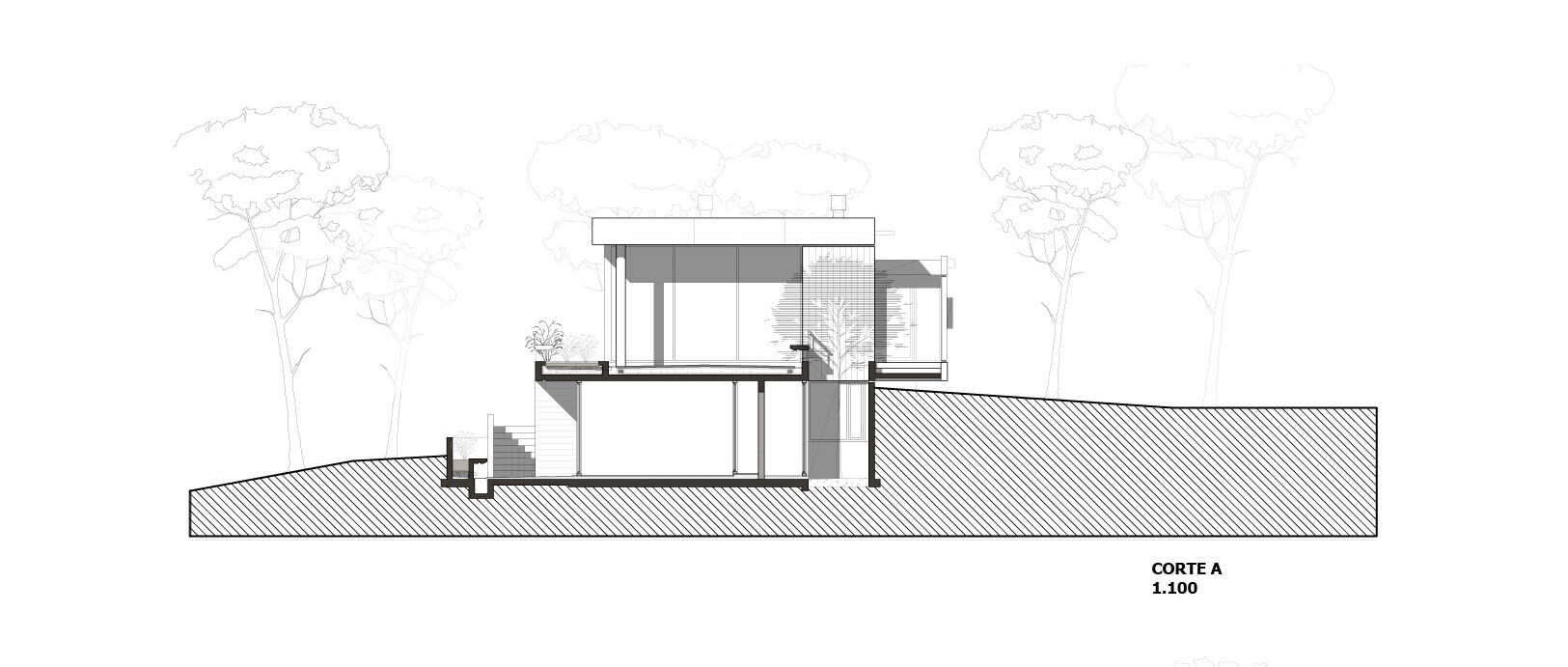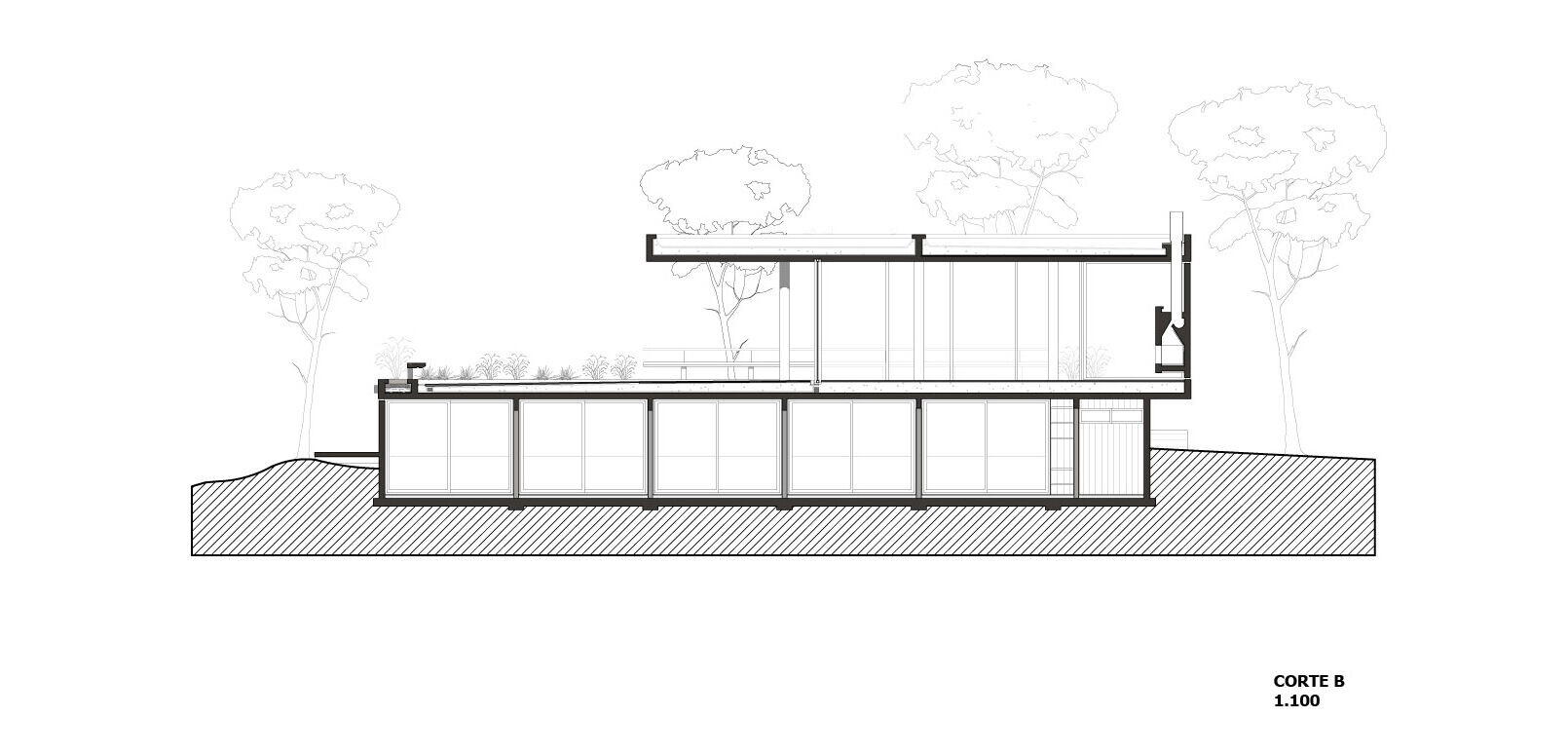It is a rest house implanted in a dense pine forest in the city of Pinamar, on land that has a sloping downward slope towards the back.
Construction is primarily a response to where it sits. A semi-buried platform is created as a socket for more private use, on which a more open volume that contains social functions rests.
The lower level or basement is organized into two strips, one for circulation and services towards the buried sector and the other that houses the bedrooms aligned with a gallery that receive the morning sun.
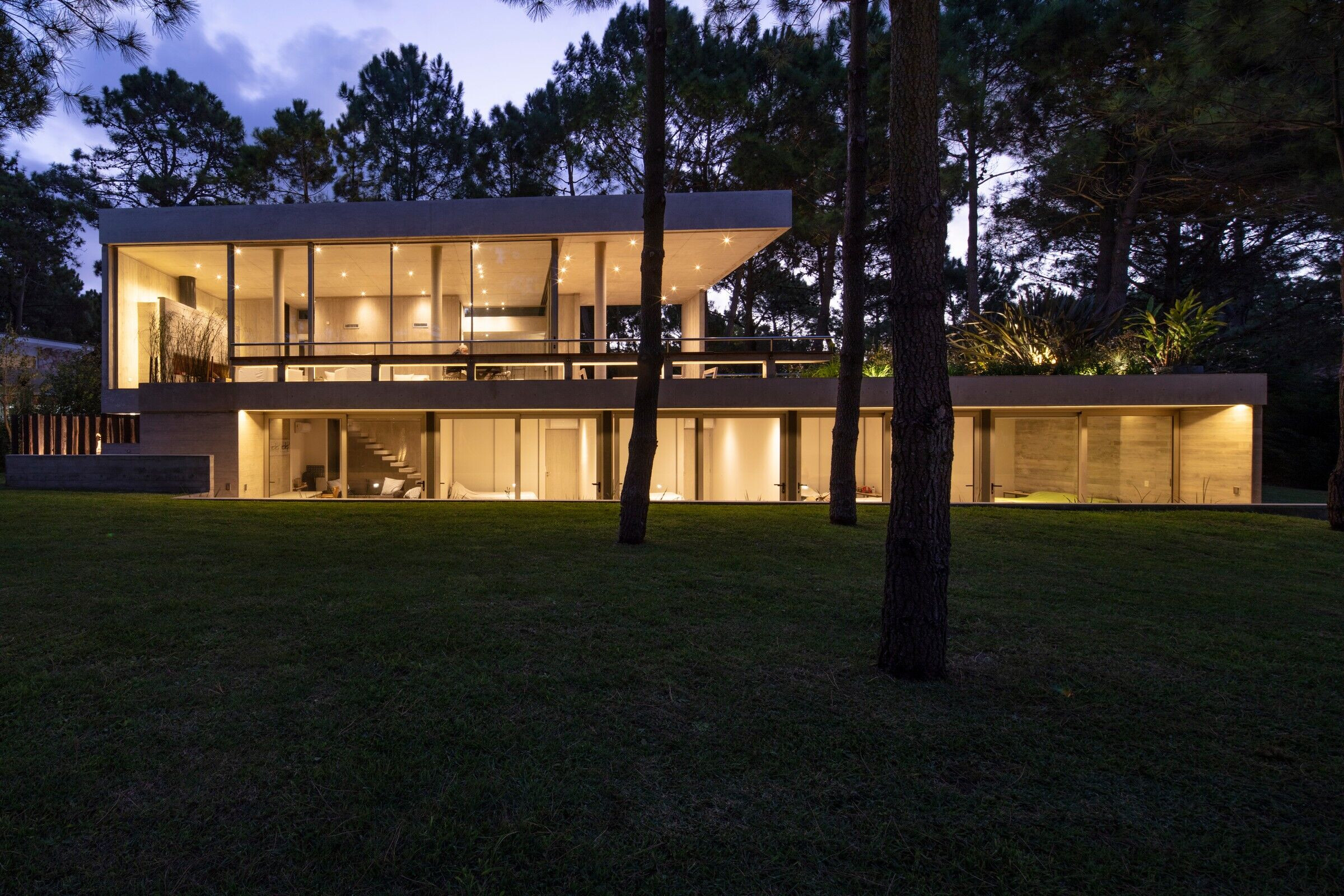
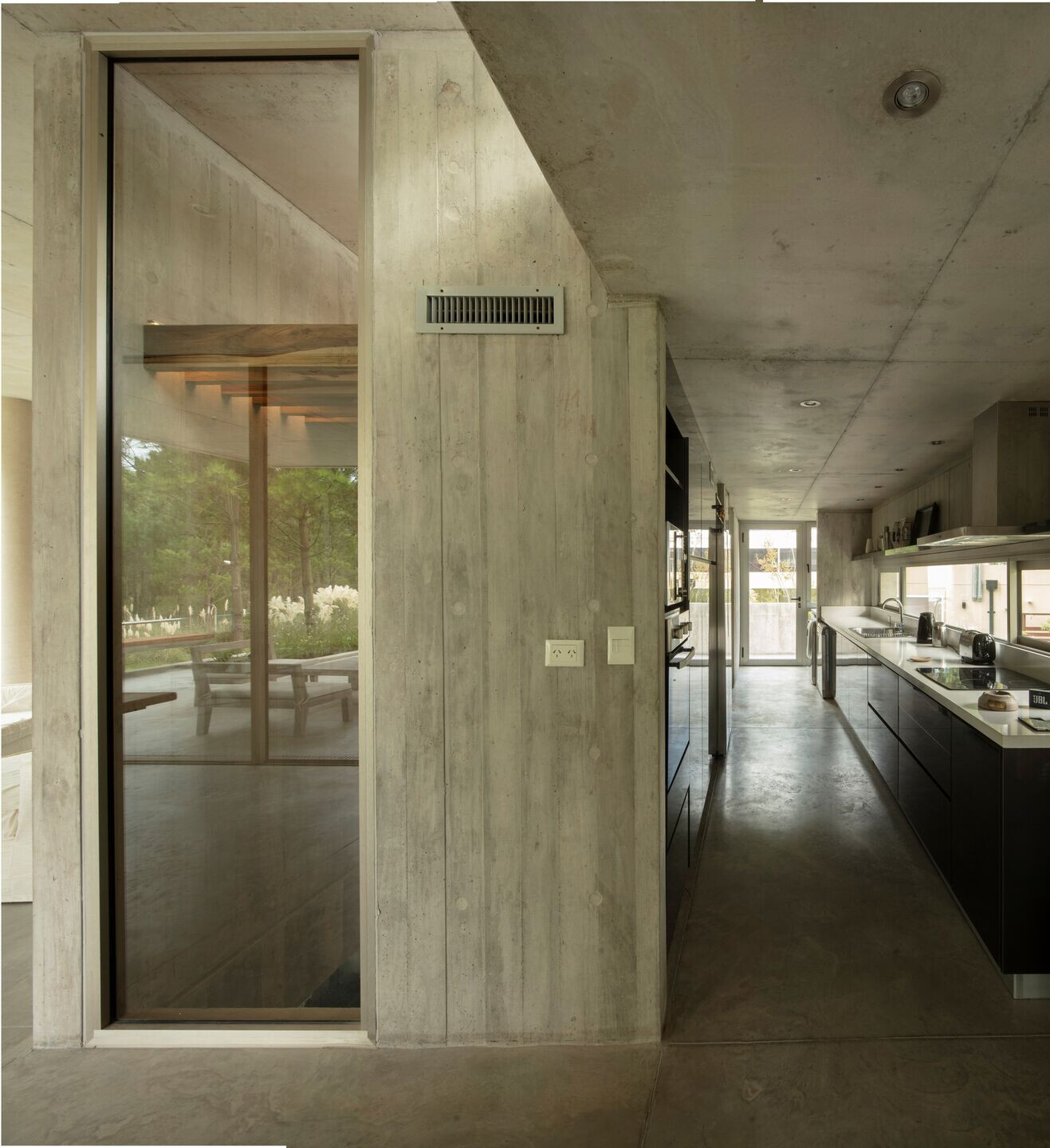
Likewise, the upper level of access is structured in bands; one towards the service front and the other facing north that houses the dining room functions. This social area becomes a shaded space outdoors, which frames the forest landscape.
The boundary between nature and the dining room is materialized by glass panels that open completely towards the terrace, achieving absolute continuity and creating a unique space where the interior blends with the exterior. This space constitutes in itself a landscape that relates to the exterior to resignify itself mutually.
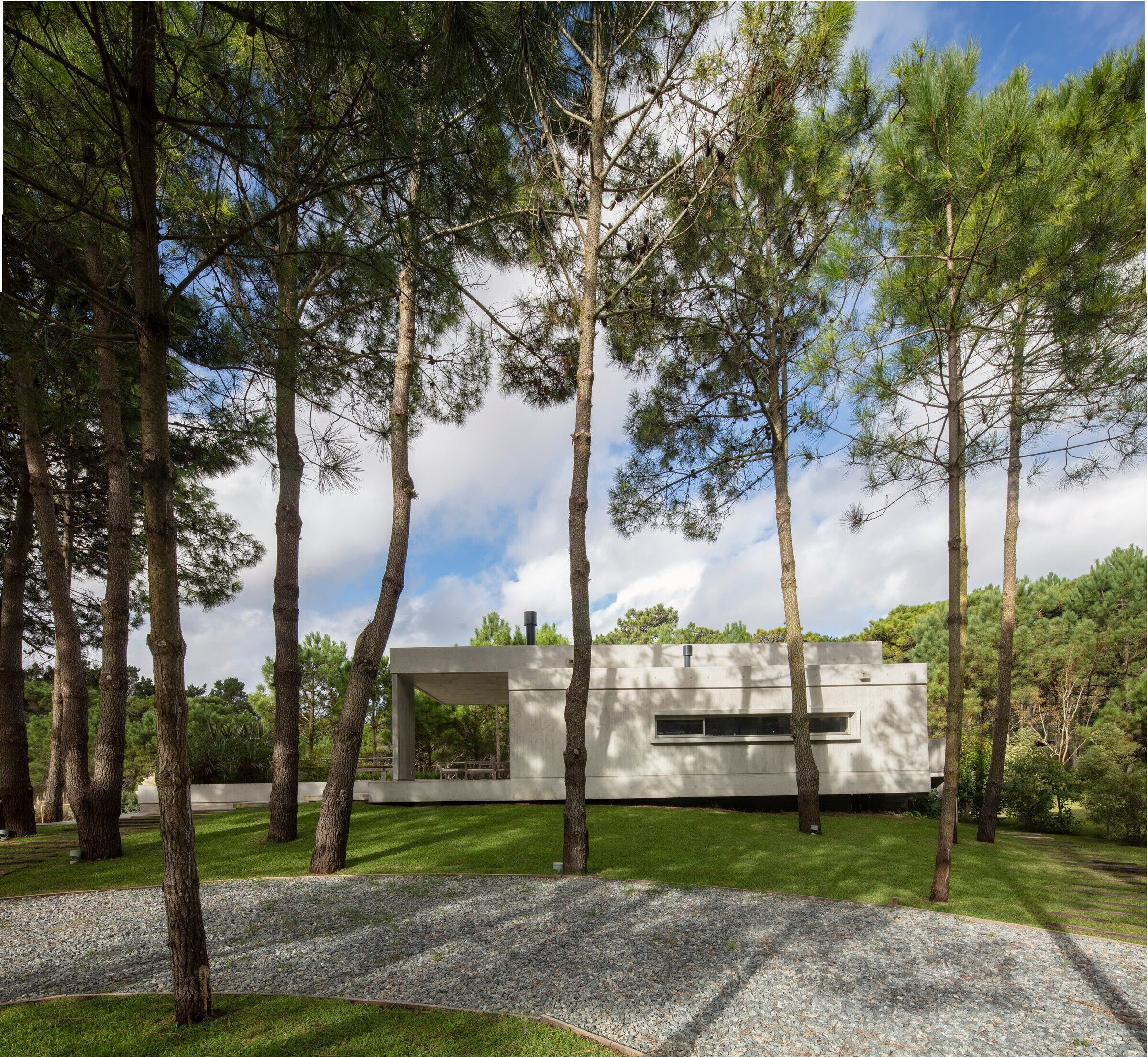

The relationship between levels occurs through successive instances of interior, exterior and room tours. From the adaptation to the slope of the land, two external stairs emerge, one more rested that leads us independently to the bedrooms and another that connects them to the terrace.
The use of exposed concrete combines support structure, space and expression of the house.
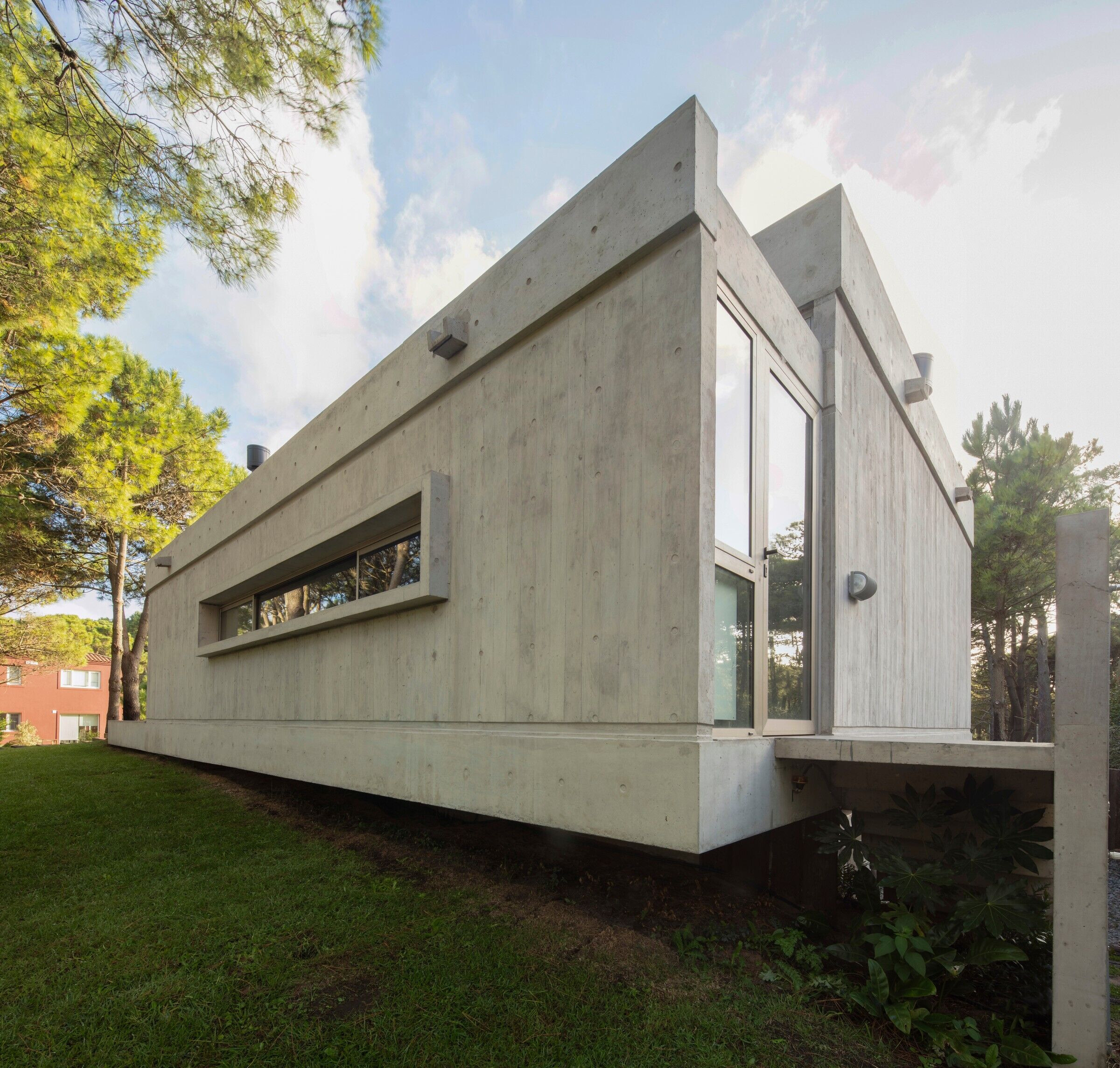
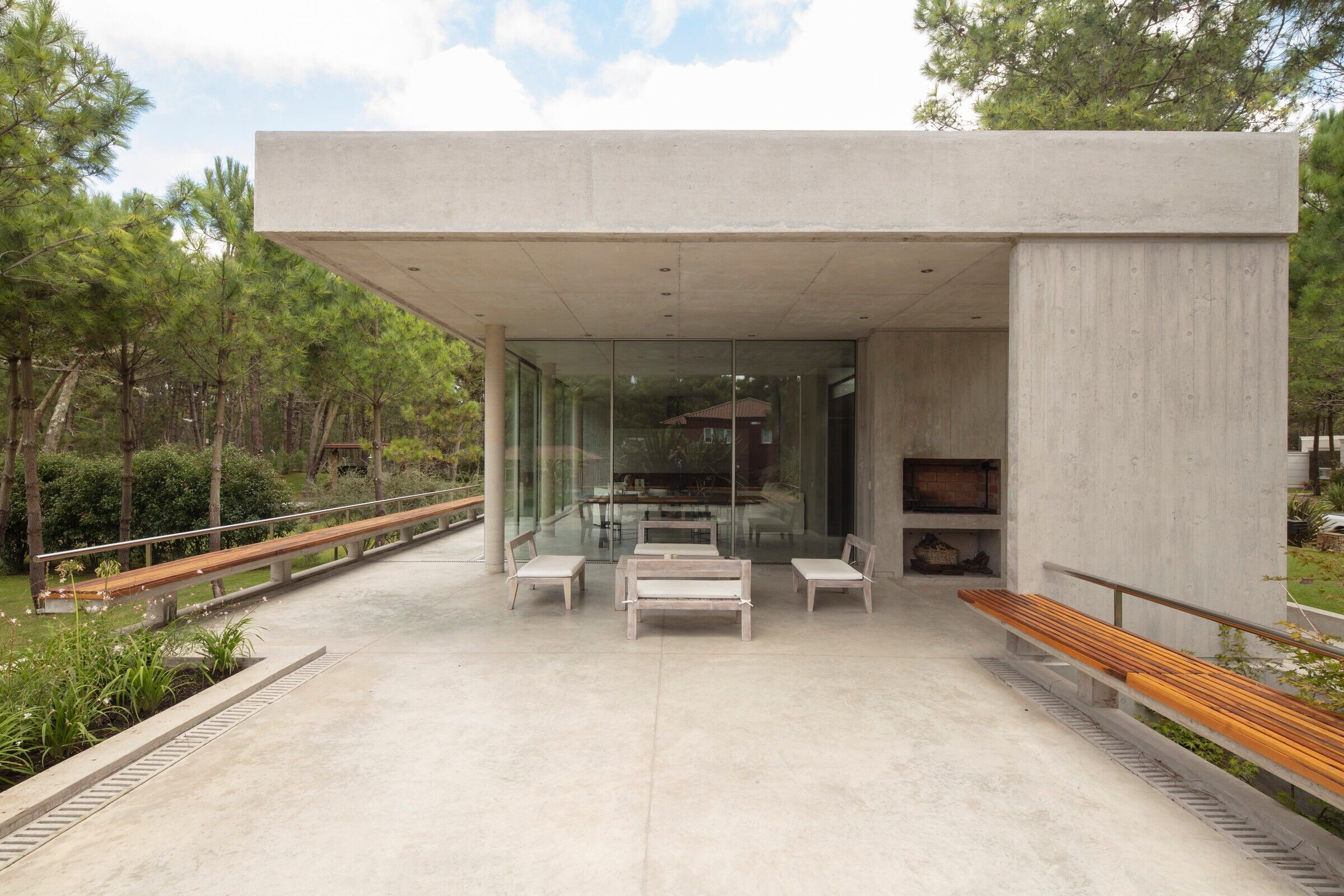
Team:
Architect: Estudio Frolik
Photo credits: Gustavo Sosa Pinilla, Manuel Elissondo
